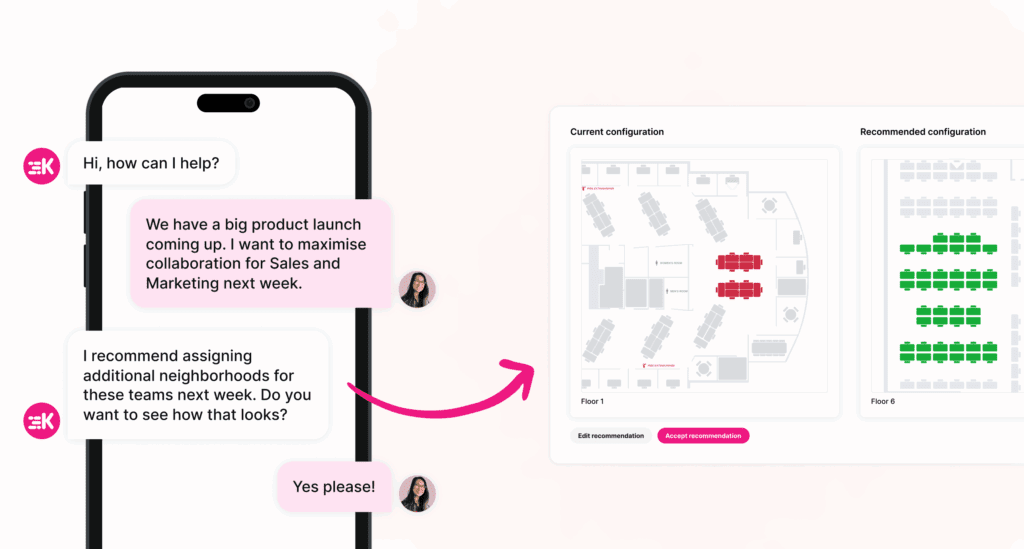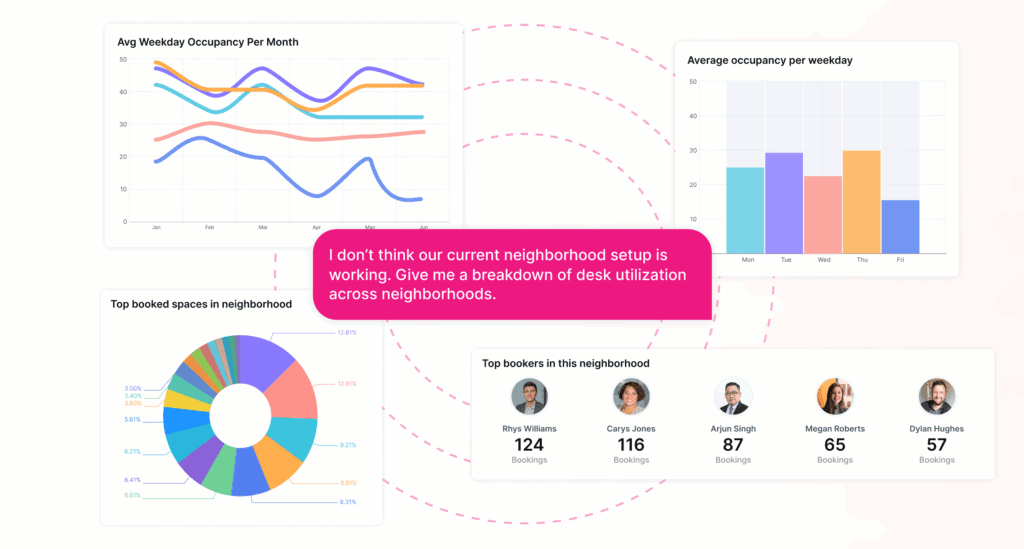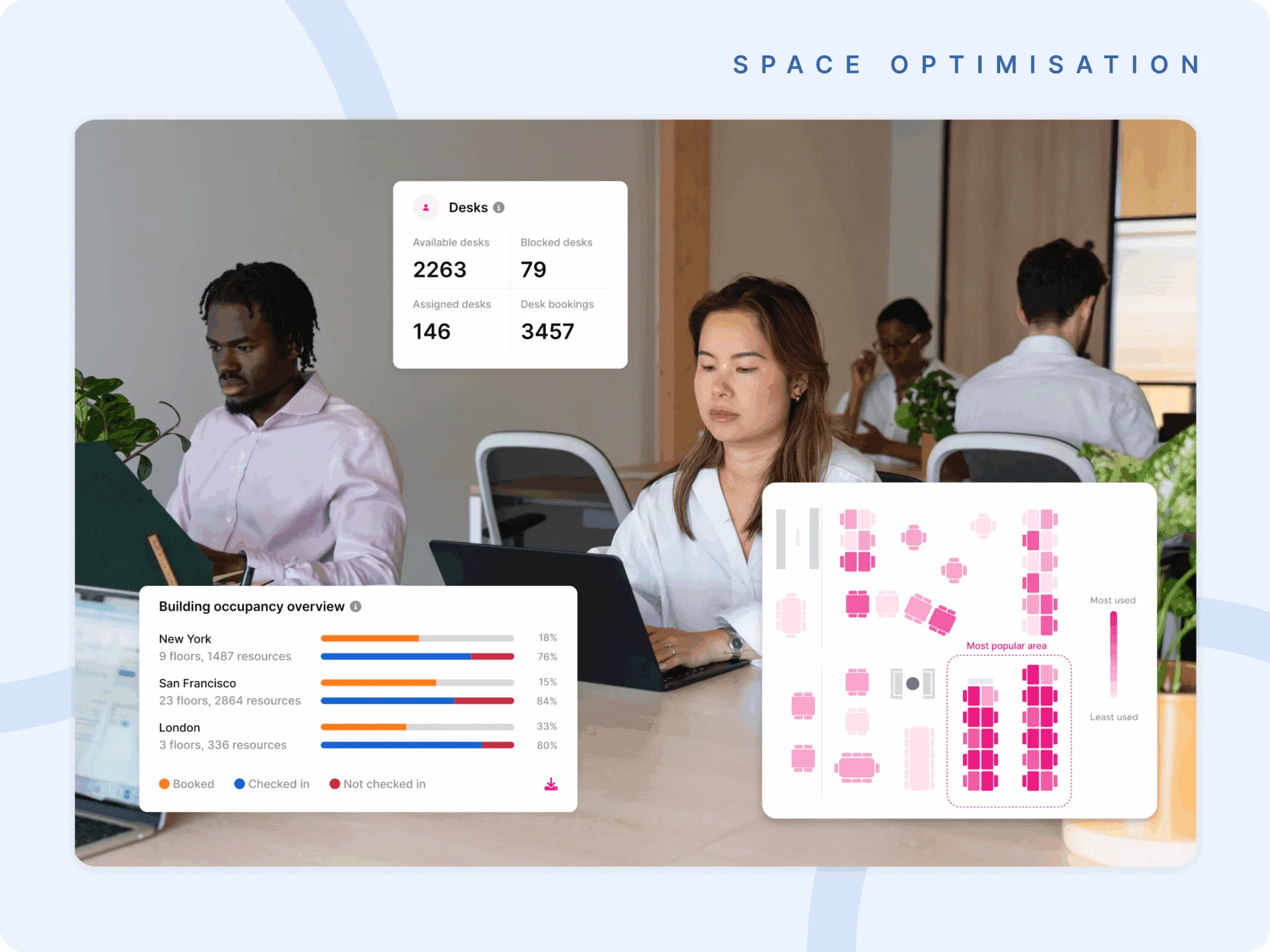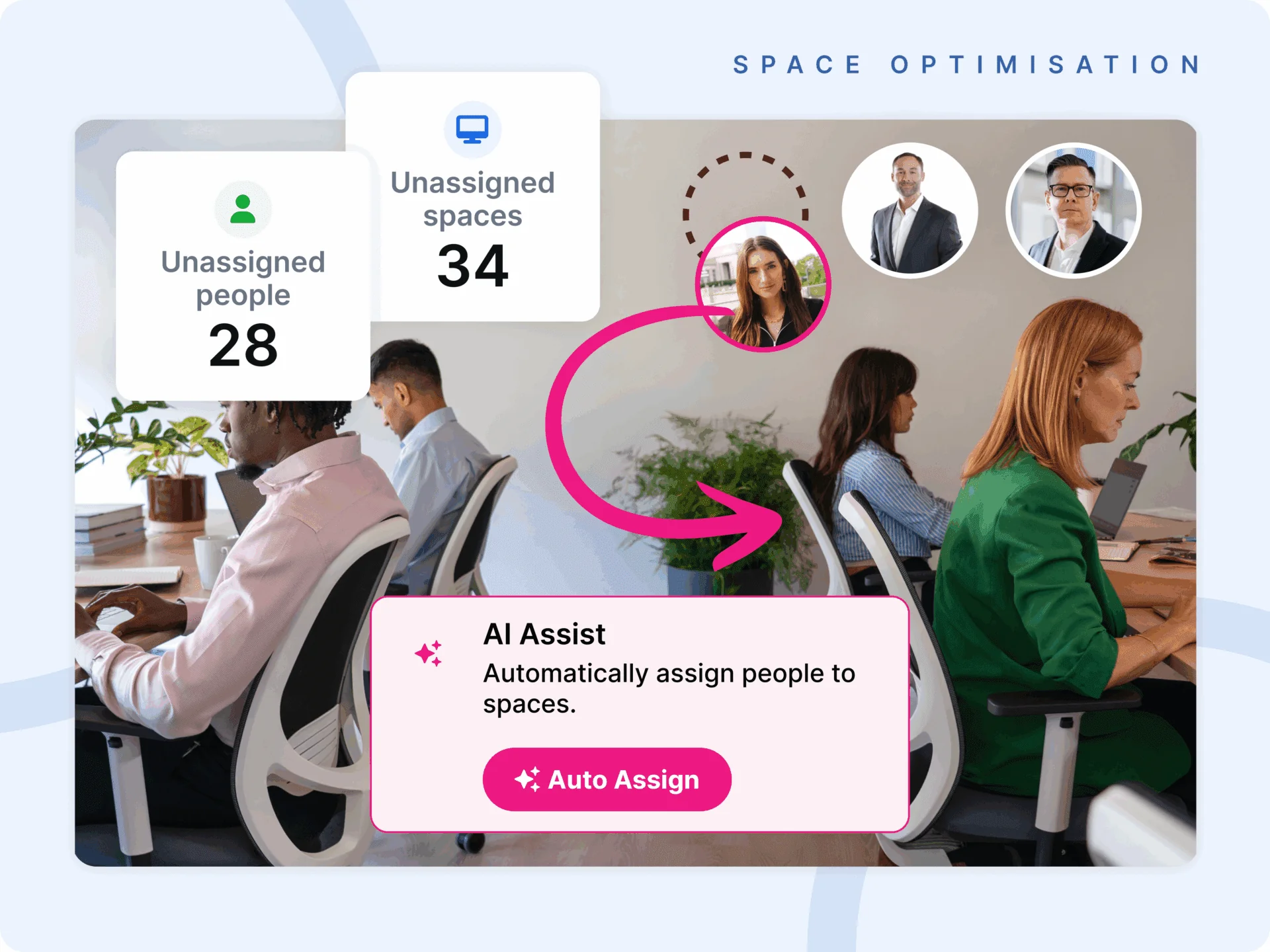Hot desking is a flexible workplace model where employees do not have assigned desks but instead use available workstations as needed. It started as a way to save costs and optimize real estate, but in the age of hybrid work, hot desking has become a practical solution to changing attendance patterns. With fewer people coming in every day, fixed desks often sit empty. Hot desking matches supply with demand and ensures space is used more effectively.
Why Hot Desking Matters in 2025
Hot desking is now mainstream, especially in the US and globally.
- Around 60 percent of U.S. and Canadian employers already use desk sharing or hoteling models
- Only about 40 percent of companies still maintain a one-to-one desk-to-employee ratio, down from 56 percent in 2023
- Globally, average office utilization reached 40 percent in Q1 2025, up nearly 10 points year on year, showing people are returning to offices but not every day
- In North America, office utilization is among the lowest worldwide at just 26.5 percent, leaving huge amounts of space underused
These numbers explain why hot desking matters: companies cannot afford to waste space, and employees no longer expect a permanent desk they may use only once or twice a week.

Benefits of Hot Desking
Hot desking offers clear advantages when it is designed and supported properly:
- Improved space efficiency: Shared desks ensure fewer empty workstations on low-attendance days, making better use of office space and helping organizations right-size their footprint.
- Lower costs: Real estate is often a company’s second largest expense after payroll. By reducing dedicated desks, businesses can cut rent, utilities, and facilities costs, freeing up budget for employee experience or collaboration spaces.
- Flexibility for employees: Staff can choose the type of desk or zone that best fits their work. Some may prefer a quiet area for deep focus, while others may sit near teammates for project collaboration. This flexibility makes the office more useful and appealing.
- Encourages connection and culture: Hot desking can break down silos by mixing people from different teams. Employees meet colleagues they might not otherwise interact with, sparking collaboration and new ideas.
- Supports hybrid work strategies: With fewer people in the office each day, hot desking makes it easier to align the workplace with changing attendance patterns, ensuring the office serves as a purposeful destination.

Challenges of Hot Desking
Hot desking also comes with challenges that need careful management:
- Uncertainty and stress: Employees may worry about arriving at the office and not finding a desk available, which can discourage them from coming in.
- Loss of personal space: Some employees value the comfort of a consistent desk setup, with personal items or familiar equipment. Hot desking removes that sense of ownership and routine.
- Hygiene and cleanliness: Shared desks and equipment require clear cleaning protocols to maintain employee trust and comfort. Without them, hot desking can quickly feel unprofessional.
- Coordination gaps: Without visibility into where teammates are sitting, employees may feel scattered across the office and miss opportunities to collaborate. Poor planning can lead to wasted office days.
- Productivity risks: Our own Kadence data shows how mid-week peaks are common. Hot desking ensures employees can find space on busy days without wasting resources on unused desks at other times.
How to Implement Hot Desking Successfully
To make hot desking work, companies need clear policies, intentional design, and the right tools.
- Measure usage patterns: Track attendance, peak days, and unused desks before making changes. Kadence gives leaders real-time occupancy data to establish baselines.
- Set desk-to-employee ratios: Move away from 1:1 models and set ratios that reflect actual presence, such as 1 desk per 1.5 or 2 employees. Kadence helps manage these ratios dynamically as patterns shift.
- Design offices for different needs: Provide quiet zones, collaboration areas, and team clusters, not just identical desks. Kadence floor plans and usage maps show how spaces are really used.
- Give employees visibility and control: Provide booking tools, real-time availability, and team coordination features. Kadence desk booking makes it simple to reserve ahead and sit near teammates.
- Iterate with feedback and data: Continuously refine layouts and policies based on analytics and employee input. Kadence delivers reports that highlight patterns and guide improvements.

Why Kadence Is the Right Platform for Hot Desking
Kadence turns hot desking from a logistical challenge into a seamless experience. Employees can see which desks are available, reserve in advance, and choose spaces that match their needs. Teams can coordinate bookings to sit together.
Leaders gain insights into occupancy and usage to reduce wasted space and costs. Companies can adapt their office footprint based on real behavior, not guesswork. Kadence makes hot desking practical, fair, and data-driven.
Frequently Asked Questions About Hot Desking
What is hot desking?
Hot desking is a workplace model where employees use shared desks rather than having permanently assigned seats.
What are the benefits of hot desking?
It helps companies cut costs, improve space utilization, and increase collaboration by mixing teams. Employees gain flexibility to choose the right space for different types of work.
What are the drawbacks of hot desking?
Without proper systems, it can create uncertainty, hygiene concerns, and a loss of personal space. Poorly designed hot desk setups can reduce productivity and morale.
How can companies make hot desking successful?
By combining data on office usage with desk booking tools, flexible layouts, and clear policies. Iteration and feedback are critical to keep improving.
How does Kadence support hot desking?
Kadence provides desk booking, real-time availability maps, occupancy analytics, and team coordination features, making hot desking efficient and employee-friendly.
Take the Next Step
Hot desking is more than a workplace trend. It is a strategic response to hybrid work and underused offices. Done well, it reduces costs, improves collaboration, and creates flexibility for employees.
Book a demo with our workplace operations experts to see how Kadence can help you implement hot desking that works for your people and your business.





